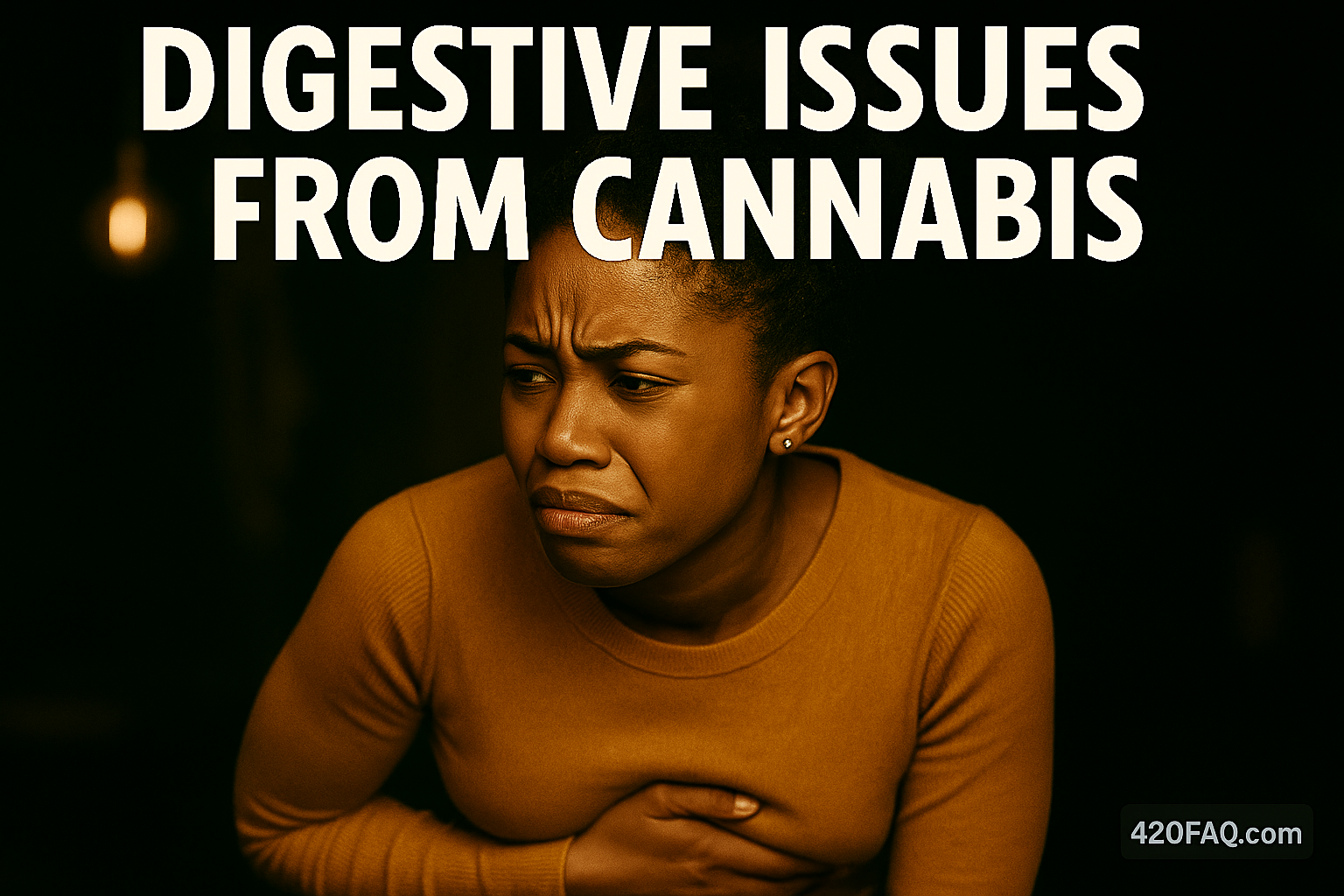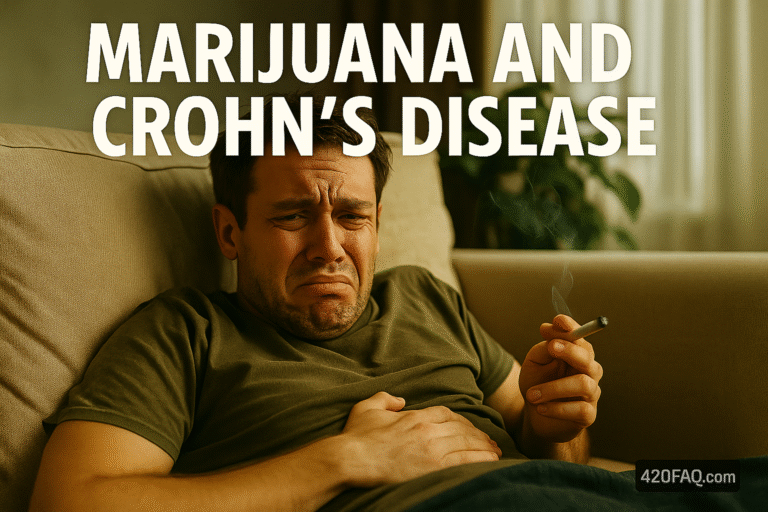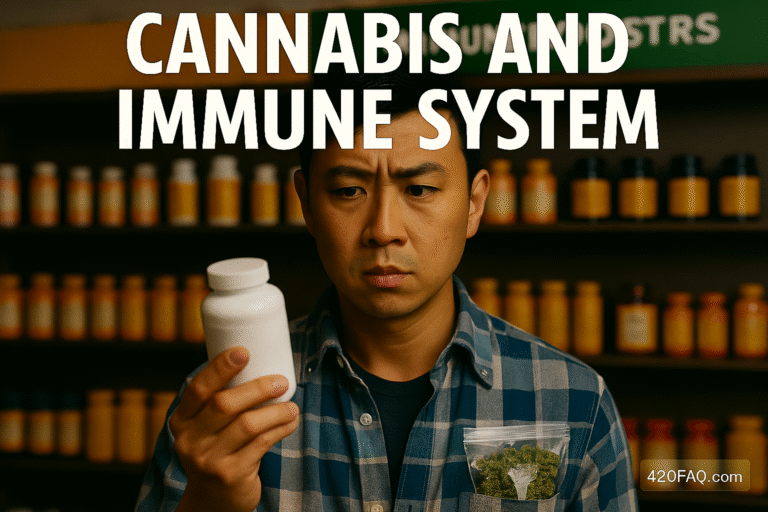
Digestive Issues From Cannabis: Comprehensive Guide to GI Effects and Management
Understanding how cannabis interacts with your digestive system is crucial whether you’re trying to troubleshoot nausea, unexplained abdominal pain, slowed motility, or recurrent vomiting. The endocannabinoid system (your body’s built-in cannabinoid network) regulates gut sensation, movement, secretion, and inflammation—so cannabis can calm some symptoms and aggravate others, depending on dose, frequency, product type, genetics, and underlying conditions. This guide explains the major digestive problems associated with cannabis, what likely drives them, and practical steps to prevent and manage issues—without hand-waving or mythology. :contentReference[oaicite:0]{index=0}
Understanding Cannabis, the Endocannabinoid System, and the Gut
The gut is laced with CB1 and CB2 receptors from esophagus to colon. When THC (tetrahydrocannabinol) and other cannabinoids bind those receptors, they influence:
• Sensory signaling (pain, nausea, visceral hypersensitivity)
• Motility (how quickly food moves)
• Secretion (acid, bile, enzymes, mucus)
• Immune tone (inflammation and barrier function)
Low or intermittent cannabis exposure may ease chemotherapy nausea or functional dyspepsia for some patients; high-dose or long-term exposure can slow the gut, trigger cyclic vomiting, or mask red-flag symptoms you should not ignore.
Common Digestive Problems Linked to Cannabis
1) Cannabis Hyperemesis Syndrome (CHS). Cyclic episodes of intense nausea/vomiting with abdominal pain, often relieved transiently by hot showers. Hallmark pattern: years of frequent use → months of worsening morning nausea → hyperemetic cycles. The only durable fix is cessation; capsaicin cream and anti-dopaminergic antiemetics help acutely.
2) Delayed Gastric Emptying (Gastroparesis-like symptoms). Early satiety, bloating, post-meal nausea. Cannabinoid activation of CB1 can slow gastric emptying in some users.
3) Constipation and Motility Slowing. CB1 signaling dampens peristalsis; high-THC or heavy concentrates can translate into fewer, harder stools for some people.
4) Reflux and Dyspepsia. Changes in gastric tone and delayed emptying may worsen heartburn, sour brash, or upper-abdominal discomfort.
5) Diarrhea or Cramping in Susceptible Users. Paradoxically, some experience looser stools—often product-, dose-, or terpene-specific; sugar alcohols and carrier oils in edibles can contribute.
6) Masking of Serious Disease. Symptom relief from cannabis can delay evaluation for ulcers, gallbladder disease, bowel obstruction, IBD flares, or cardiac pain presenting as epigastric discomfort.
How Cannabis Alters Gut Function: Mechanisms (Motility, Sensation, Inflammation)
Motility. CB1 activation on enteric neurons inhibits acetylcholine release, reducing propulsive contractions—slowing stomach and intestinal transit. See emerging clinical imaging evidence on motility changes summarized in Cannabis Use and Associated Gastrointestinal Disorders.
Visceral sensation. Cannabinoids can blunt nausea signaling centrally and peripherally, which is why low/intermittent dosing can help some conditions but also why high, chronic exposure may dysregulate emesis control (CHS).
Secretion & barrier. Cannabinoids modulate gastric acid and epithelial permeability; the net effect depends on receptor balance, dose, and co-ingredients (e.g., ethanol in tinctures, MCT oil in edibles).
Neuroimmune tone. CB2 activity can be anti-inflammatory, yet repeated high-THC exposure may shift gut-brain emesis circuits.
Risk Factors That Raise the Odds of Digestive Problems
• Daily/high-THC use (flower multiple times/day, dabs, potent vapes, RSO).
• Edibles at large doses (delayed kinetics, longer receptor engagement).
• History of cyclic vomiting, migraine variants, or autonomic dysfunction.
• Concomitant opioids, anticholinergics, or GLP-1 agonists (further slow GI).
• Dehydration, low fiber intake, and abrupt dose escalations.
Natural Course and Symptom Patterns
CHS. Prodrome (morning nausea, fear of vomiting) → hyperemesis (intractable vomiting every minutes to hours) → recovery (days to weeks). Recurs with resumed cannabis.
Motility slowing. Gradual constipation, bloat, and heavy/slow stomach after dose increases; improves over days to weeks with down-titration or cessation.
Dyspepsia/reflux. Worse after late-night sessions and large edible loads; often improves with earlier dosing, smaller meals, and cutting back THC.
Self-Care & Evidence-Backed Strategies
First line for persistent problems: lower exposure. Stepwise reduction of THC dose/frequency; consider balanced THC:CBD products; avoid wake-and-bake patterns.
Timing & form factor. Prefer inhaled micro-doses for short events over large edible loads if nausea-prone; avoid high-sugar or sugar-alcohol edibles; don’t dose right before bed if reflux is an issue.
Hydration & electrolytes. Aim for steadily sipped fluids; in vomiting cycles, oral rehydration solutions beat plain water.
Fiber and motility hygiene. 25–38 g/day fiber from food, daily walking, consistent meals; magnesium glycinate/citrate as needed (per label).
Targeted acute tools. Capsaicin 0.025–0.075% cream to the abdomen for CHS-like episodes; warm showers; non-sedating antiemetics from a clinician if required.
Track triggers. Log cultivar, terpenes, dose, form, and food pairing; patterns often emerge.
When to Seek Medical Care (Don’t Try to “Tough It Out”)
• Vomiting >24 hours, blood in vomit or stool, black tarry stools, severe dehydration, confusion, chest pain, or fever.
• Weight loss, progressive trouble swallowing, or persistent pain waking you from sleep.
• Known conditions (IBD, ulcers, gallstones, diabetes with gastroparesis) flaring after cannabis changes.
Special Populations and Contexts
IBD (Crohn’s/UC). Some symptom relief is reported, but objective inflammation may persist—masking flares. Work with a GI professional.
Diabetes/Autonomic dysfunction. Higher risk of gastroparesis-like symptoms with added CB1 slowing.
GLP-1 users. Cannabis can compound medication-related nausea/slow emptying.
Older adults. Polypharmacy and slower motility increase constipation and reflux risk.
Adolescents. CHS is increasingly recognized with high-potency products.
Research and Scientific Understanding
Large-scale reviews and imaging studies are clarifying dose-response and motility effects. For a window into the broader neuropsychiatric context that often co-travels with GI complaints, see Effects of Marijuana on Mental Health. For nuclear medicine and transit-study perspectives on bowel motility in cannabis users, see Cannabis Use and Associated Gastrointestinal Disorders. Together these lines of evidence support a coherent model: chronic high-THC exposure can dysregulate emesis control and slow GI transit, while thoughtful, lower-dose patterns may be neutral or helpful for select symptoms.
Frequently Asked Questions About Cannabis and Digestion
Can cannabis help nausea while also causing vomiting?
Yes. Low/intermittent use can suppress nausea; high-dose chronic use can flip the circuit into CHS with cyclic vomiting. The pattern, not a single session, predicts risk.
What’s the single best fix for CHS?
Complete cessation of cannabis. Supportive care includes IV fluids when needed, topical capsaicin on the abdomen, and antiemetics; recurrence is common if use resumes.
Why do hot showers help during CHS episodes?
Heat activates TRPV1 receptors and temporarily overrides the dysregulated emesis signaling—relief is real but short-lived and not curative.
Do edibles cause more stomach issues than inhalation?
Often, yes. Edibles engage first-pass metabolism longer, can delay gastric emptying, and include carriers (oils, sugars, sugar alcohols) that add GI load. Dose and timing matter.
How do I minimize constipation from cannabis?
Reduce THC dose/frequency, ensure daily fiber and fluids, add gentle activity, and consider magnesium at night. If persistent, reassess products and rule out other causes.
Is CBD safer for the gut?
CBD is less likely than high-THC to slow transit, but large doses can still cause diarrhea or interactions. Start low, track effects, and avoid megadosing.
Could my reflux be from late-night sessions?
Possibly. Cannabis can relax LES tone and delay emptying. Avoid heavy dosing within 3–4 hours of bed, raise the head of bed, and shrink evening meals.
How fast do symptoms improve after cutting back?
For motility-related bloat/constipation, improvements may appear in days to a couple of weeks. For CHS, vomiting stops over days; full normalization can take weeks.
Do terpenes matter?
They can. Myrcene-heavy or highly sedating profiles sometimes correlate with slowed gut in sensitive users; citrusy or pinene-forward profiles may feel lighter. Track your patterns.
When is it not cannabis?
Red flags (GI bleeding, weight loss, nocturnal pain, persistent fevers) demand medical evaluation. Cannabis might soothe pain from a gallbladder attack, ulcer, or obstruction—don’t let relief hide an emergency.
Conclusion
Cannabis can be a balm or a boomerang for the gut. The difference is dose, frequency, product choice, and personal biology. If your digestive tract is grumbling, start with a clean experiment: reduce or pause THC, simplify products, hydrate, and tune your routine. If warning signs show up—or if symptoms don’t ease—loop in a clinician promptly. The goal isn’t ideology; it’s a calmer, predictable gut and a clear read on cause and effect.







